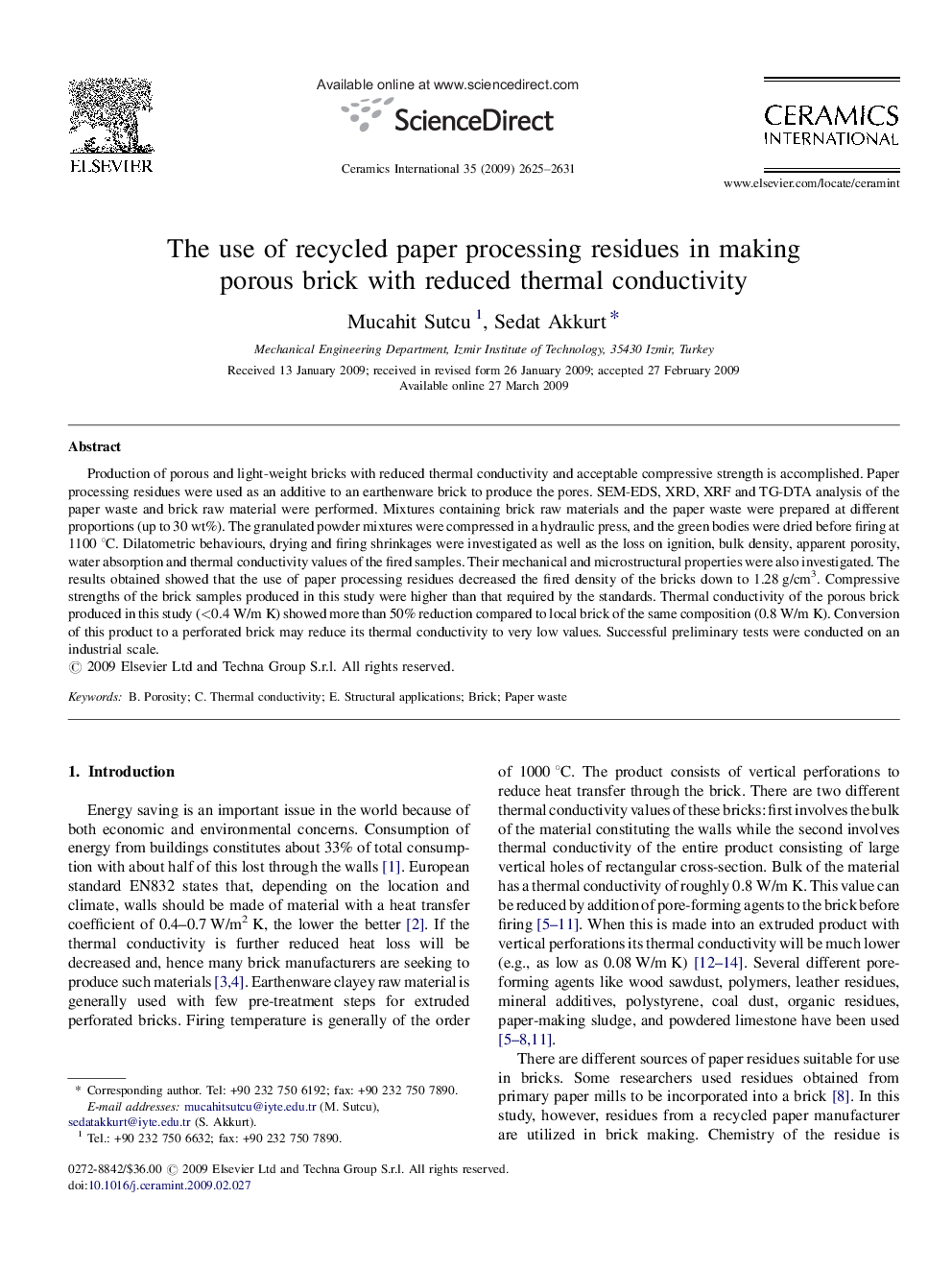| Article ID | Journal | Published Year | Pages | File Type |
|---|---|---|---|---|
| 1464685 | Ceramics International | 2009 | 7 Pages |
Production of porous and light-weight bricks with reduced thermal conductivity and acceptable compressive strength is accomplished. Paper processing residues were used as an additive to an earthenware brick to produce the pores. SEM-EDS, XRD, XRF and TG-DTA analysis of the paper waste and brick raw material were performed. Mixtures containing brick raw materials and the paper waste were prepared at different proportions (up to 30 wt%). The granulated powder mixtures were compressed in a hydraulic press, and the green bodies were dried before firing at 1100 °C. Dilatometric behaviours, drying and firing shrinkages were investigated as well as the loss on ignition, bulk density, apparent porosity, water absorption and thermal conductivity values of the fired samples. Their mechanical and microstructural properties were also investigated. The results obtained showed that the use of paper processing residues decreased the fired density of the bricks down to 1.28 g/cm3. Compressive strengths of the brick samples produced in this study were higher than that required by the standards. Thermal conductivity of the porous brick produced in this study (<0.4 W/m K) showed more than 50% reduction compared to local brick of the same composition (0.8 W/m K). Conversion of this product to a perforated brick may reduce its thermal conductivity to very low values. Successful preliminary tests were conducted on an industrial scale.
